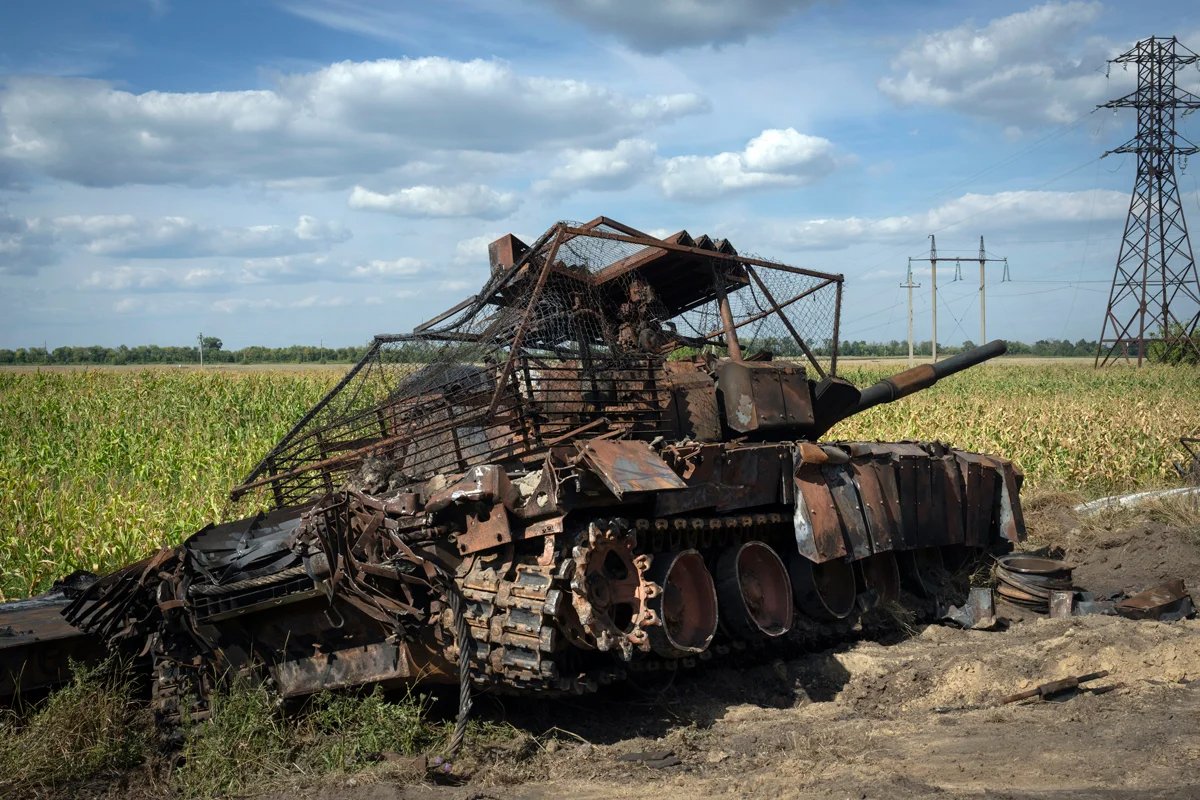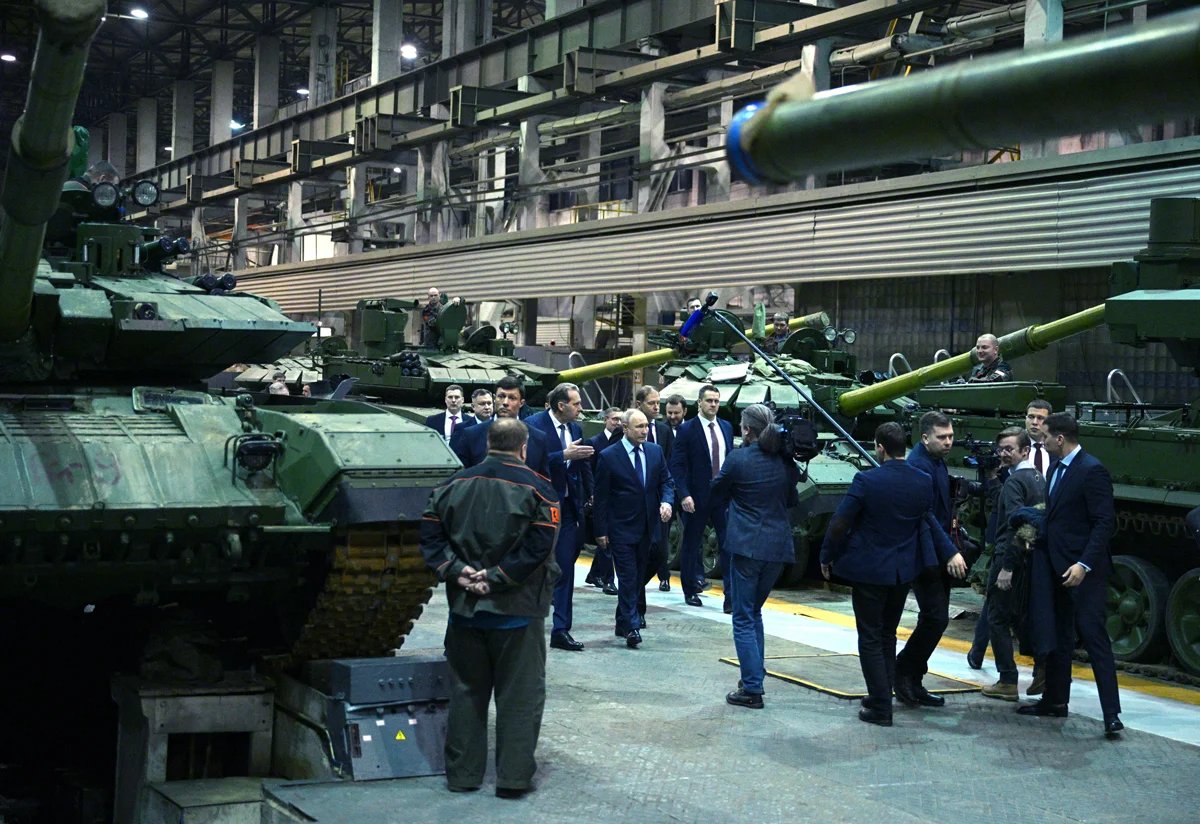



In early June, Ukrainian Russian-language news outlet Dialog.ua reported that Russian tanks had “ceased to exist as a factor on the battlefield”, adding that the claim was no exaggeration, “but a reflection of the facts. All armour capable of fighting has either been destroyed or cannot be repaired.”
Citing data collected by the Warspotting project, an open-source monitor of Russian military losses, Dialog.ua noted that the number of Russian tanks lost in the war zone hit an all-time low in May 2025, not because they were “being better protected”, but because “they simply no longer exist”.
Then, a few weeks later, the Ukrainian Defence Ministry’s Main Directorate of Intelligence (GUR) reported that due to the “large-scale irretrievable losses of weapons and military equipment sustained during the war against Ukraine”, Russia had been forced to deploy obsolete tanks to theatre due to a lack of their modern equivalents, or even comparatively up-to-date Soviet-era combat vehicles.
In particular, the GUR noted that 1960s-era T-62 tanks were being readied for combat at a repair plant in Russia’s far eastern Zabaykalsky region, before being deployed to western Russia from the Eastern Military District. The technical condition of most of these vehicles, according to the GUR, was “unsatisfactory” as they “had been stored outdoors for decades”, without ever being serviced.
Russia was nevertheless on track to deplete “its remaining tank and armoured vehicle reserves by the end of 2025”.
However, due to an “acute shortage of modern main battle tanks such as the T-90M and T-72B3M”, the GUR said, the T-62s had become a “temporary but necessary solution” with the production of more modern alternatives limited by shortages both in Russian industrial capacity and of imported high-tech components.
Beyond Ukraine, in mid-June, the US-based Institute for the Study of War (ISW) reported that Russia’s depletion of its Soviet-era tank reserves appeared to be slowing, potentially due to its increased use of motorcycles and ATVs on the battlefield. Russia, it said, still possessed 46% of its pre-war reserves of tanks, 42% of its pre-war reserves of infantry-fighting vehicles, and 48% of its pre-war reserves of armoured personnel carriers, though it added that Russia was nevertheless on track to deplete “its remaining tank and armoured vehicle reserves by the end of 2025”.
As of the start of July, according to Russian news analysis YouTube channel To Be Or, Russian warehouses only contained 251 reserve tanks judged to be “in good condition”, another 1,804 tanks in “poor condition”, and another 1,287 tanks deemed only suitable for spare parts.

A destroyed Russian tank with anti-drone defences near Sudzha, Kursk region, Russia, 16 August 2024. Photo: AP Photo / Scanpix / LETA
Despite the various media reports predicting serious problems for Moscow, several military experts have told Novaya Gazeta Europe that they don’t consider the Russian outlook to be as bleak as it may seem.
“At the beginning of the 2022 invasion, Russia had between 2,500 and 3,000 tanks in service, and about 10,000 more in reserve,” one Russian military expert who spoke on condition of anonymity told Novaya Europe. “Over the past three years of war … armoured repair plants have provided the army with over 6,000 modernised T-72 units. And another 4,000 tanks remain in storage, most of which are the quite repairable T-72s.”
“Therefore, the Russian army will have no problems with tanks in the near future. They are just being protected from Ukrainian drones. They are probably preparing for a major offensive,” he added, before going on to say that the Russian military-industrial complex was not only able to repair Soviet military hardware but was also manufacturing new armoured vehicles. Currently, 10 different units of a tank support vehicle are being assembled, and work is underway on the Shturm project, a robotic assault vehicle system based on the T-90M platform.
All that’s left at long-term storage bases is obsolete scrap metal.
Former Ukrainian intelligence officer turned military analyst Ivan Stupak told Novaya Gazeta Europe that he thought it “very premature to claim that Russia has run out of tanks”.
“There may indeed be a shortage of tanks for launching large-scale offensive operations — we’re already seeing a shortfall in this type of weaponry,” he said, “but the Russian army is not facing a crisis. Experts estimate that Russia is producing between 250 and 300 new T-90 ‘Proryv’ tanks a year.”
However, Israeli military expert David Sharp told Novaya Gazeta Europe that Russia was “in bad shape” when it came to tanks: “As of 24 February 2024, the Russian army had just over 2,500 operational tanks. And by now, all that’s left at long-term storage bases is obsolete scrap metal … I believe the real number of Russian tank losses to date is somewhat higher than 4,000. And at this point, very few repairable vehicles remain”.
“Beyond combat losses, there’s also a significant number of tanks that have simply broken down. After all, these vehicles, which were already not in the best condition, are being operated in the harshest conditions and not always by qualified personnel,” Sharp continued, adding that most of the Soviet-era tanks currently being used were already past their operational prime when they were mothballed following the collapse of the USSR.

Vladimir Putin visits the UralVagonZavod machine-building company in Nizhny Tagil, Sverdlovsk, region, Russia, 15 February 2024. Photo: Ramil Sitdikov / Sputnik / EPA
However, all three military experts agreed that whether or not Russian tank reserves ultimately prove to be sufficient would most likely be irrelevant to the outcome of the war in Ukraine. Stupak noted that tanks have a very short life expectancy in modern warfare and can be destroyed by first-person view drones from distances of up to 15 kilometres away from the front line.
“Tanks are burning up like candles in a church,” Stupak added. “No reliable defence has yet been invented against drones. Tanks can now be seen as an outdated type of weapon that no longer lives up to expectations.”
The Russians have shifted to using small assault groups in civilian vehicles — motorcycles, buggies, and even ordinary cars.
Despite the lessons learned in Ukraine, Western countries are continuing to produce tanks en masse, according to Stupak. “Clearly some armoured vehicles are still necessary, at least to transport soldiers to the battlefield. But infantry fighting vehicles, when carrying troops, quickly become mass graves when the skies are dominated by kamikaze drones. That’s why the Russians have shifted to using small assault groups in civilian vehicles — motorcycles, buggies, and even ordinary cars.”
Sharp concurred, saying that Russia had started to realise the diminished combat relevance of heavy armoured vehicles on the modern battlefield. “Russia has yet to find an effective countermeasure against drones”, beyond the increasingly “widespread use of high-speed and highly manoeuvrable vehicles such as buggies, motorcycles and all-terrain-vehicles”.
“Russia is learning to attack with a smaller number of tanks”, Sharp continued, before adding that, “so far it is succeeding”.
The Russian government has banned independent media. We were forced to leave our country in order to keep doing our job, telling our readers about what is going on Russia, Ukraine and Europe.
We will continue fighting against warfare and dictatorship. We believe that freedom of speech is the most efficient antidote against tyranny. Support us financially to help us fight for peace and freedom.
By clicking the Support button, you agree to the processing of your personal data.
To cancel a regular donation, please write to [email protected]
VPNovaya
Help Russians and Belarusians Access the Truth
